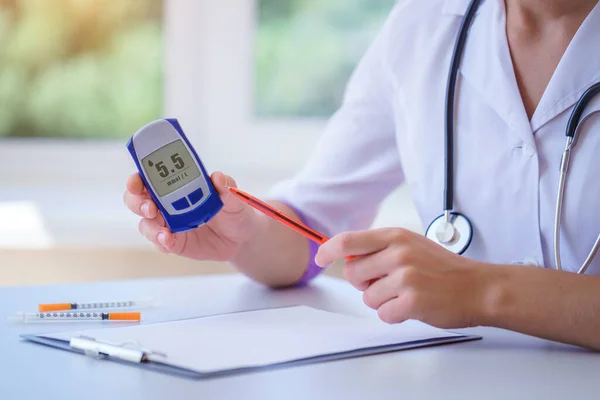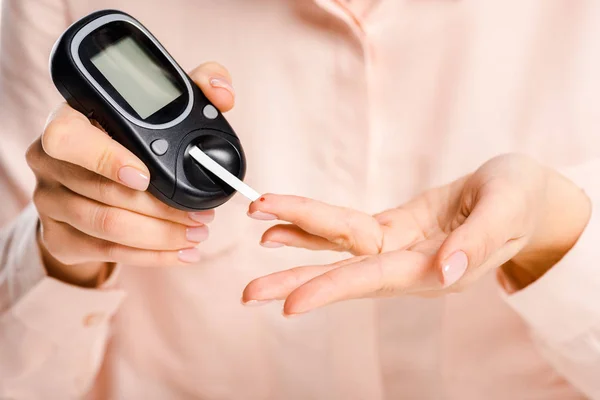In the intricate realm of human health, maintaining optimal blood glucose levels stands as a fundamental pillar. The blood glucose test procedure, often regarded as the gateway to understanding one’s metabolic well-being, unveils invaluable insights into a person’s physiological condition. This article aims to comprehensively delve into the ‘why,’ ‘how,’ and ‘when’ of blood glucose testing, shedding light on its significance, the mechanics behind the procedure, and the pivotal timing for obtaining these critical measurements.

Table of Contents
Why Monitor Blood Glucose Levels?
Blood glucose, also referred to as blood sugar, serves as the primary source of energy for the body’s cells. Its regulation is paramount to the body’s functioning, and even slight deviations from the optimal range can lead to a cascade of health issues. Consequently, monitoring blood glucose levels holds multifaceted significance:
- Diabetes Management: The foremost reason for regular blood glucose testing is diabetes management. Individuals with diabetes must keep their blood sugar levels within a specific range to prevent complications. Frequent monitoring helps adjust insulin doses and lifestyle factors accordingly.
- Early Detection: For those not diagnosed with diabetes, periodic testing can identify prediabetic conditions. Early detection enables proactive lifestyle changes to prevent the development of full-blown diabetes.
- Treatment Assessment: Blood glucose tests are instrumental in evaluating the effectiveness of diabetes treatment regimens. Physicians rely on these measurements to adjust medications and therapies to achieve optimal results.
- Hypoglycemia Detection: Low blood sugar levels, known as hypoglycemia, can be equally perilous. Symptoms like dizziness, confusion, and loss of consciousness can arise suddenly. Regular testing helps individuals at risk of hypoglycemia take preventive measures.
- Heart Health: There is a correlation between high blood glucose levels and heart disease. Monitoring blood sugar can contribute to better cardiovascular health by identifying potential risks.
How is the Blood Glucose Test Procedure Conducted?
The blood glucose test procedure encompasses various methods, each serving distinct purposes. Here, we explore the most common techniques employed:
- Fasting Blood Sugar Test (FBS):
- Purpose: To measure glucose levels after an overnight fast.
- Procedure: The individual refrains from eating or drinking for at least eight hours before the test. A blood sample is then drawn from a vein, typically in the morning.
- Common Use: Diagnosis of diabetes and prediabetes.
- Random Blood Sugar Test:
- Purpose: To assess glucose levels at any time during the day, regardless of the last meal.
- Procedure: Blood is drawn without prior fasting. This test is often used in emergency situations when immediate results are required.
- Common Use: Screening for diabetes, especially in urgent medical situations.
- Oral Glucose Tolerance Test (OGTT):
- Purpose: To assess the body’s ability to process glucose.
- Procedure: After an overnight fast, the individual consumes a sugary solution. Blood samples are taken at intervals over the next few hours to monitor how the body metabolizes glucose.
- Common Use: Gestational diabetes screening and assessment of unusual fluctuations in blood sugar.
- Hemoglobin A1c Test (HbA1c):
- Purpose: To measure the average blood sugar levels over the past two to three months.
- Procedure: This test does not require fasting. It assesses the percentage of hemoglobin that is glycated, providing a long-term perspective on glucose control.
- Common Use: Monitoring long-term glucose control in individuals with diabetes.
- Continuous Glucose Monitoring (CGM):
- Purpose: To continuously track glucose levels throughout the day and night.
- Procedure: A small sensor is inserted under the skin, typically on the abdomen. It records glucose levels at regular intervals and transmits data to a monitoring device.
- Common Use: Comprehensive glucose monitoring in individuals with diabetes to aid in treatment adjustments.
When to Check Blood Glucose Levels?
The timing of blood glucose testing plays a pivotal role in obtaining accurate and actionable results. The frequency of testing varies based on individual circumstances and medical recommendations. Here’s a breakdown of when and why blood glucose levels should be checked:
- Fasting State:
- When: In the morning, after an overnight fast.
- Why: To establish a baseline reading and assess how the body handles glucose in the absence of recent food intake. Typically used for diagnosing diabetes.
- Before Meals:
- When: Prior to each meal.
- Why: To gauge how the body responds to specific foods and ensure blood sugar levels are within target ranges before eating.
- After Meals:
- When: About two hours after eating.
- Why: To observe the post-meal spike in blood sugar, which can provide insights into the body’s ability to manage glucose after consuming carbohydrates.
- Bedtime:
- When: Right before bedtime.
- Why: To ensure blood sugar levels are stable during sleep, which is essential for overall health. It helps in adjusting nighttime insulin doses for individuals with diabetes.
- Before and After Physical Activity:
- When: Prior to exercise and afterward.
- Why: To understand the impact of physical activity on blood glucose levels. Adjustments in food intake or insulin doses can be made accordingly.
- During Illness or Stress:
- When: During periods of illness or high stress.
- Why: Illness and stress can affect blood sugar levels. Frequent monitoring helps in preventing dangerous fluctuations and managing diabetes effectively.
- Periodic Monitoring:
- When: As recommended by a healthcare provider.
- Why: Regular check-ups, including HbA1c tests, are crucial for long-term management of diabetes and assessing the overall effectiveness of the treatment plan.
Blood Glucose Test Procedure: Tips for Accurate Results
Obtaining precise blood glucose readings requires attention to detail and adherence to specific guidelines. Here are some essential tips to ensure the accuracy of your test results:
- Follow Fasting Requirements: If you are instructed to fast before a test, adhere to the recommended fasting period. Consuming even small amounts of food or beverages can affect the results.
- Proper Technique: Ensure that the person performing the blood draw or fingerstick is well-trained and follows proper hygiene and safety protocols.
- Use a Reliable Glucometer: If you are performing self-monitoring at home, use a glucometer that is regularly calibrated and validated for accuracy.
- Clean Hands: Before testing, clean your hands thoroughly to remove any contaminants that may affect the reading.
- Lancet Pricking: If using a lancet for a fingerstick, choose a different spot on the fingertip each time to prevent soreness or calluses.
- Record Results: Maintain a log of your blood glucose readings, along with information about meals, medications, and physical activity. This data can help you and your healthcare provider make informed decisions.
- Discuss Variability: Understand that blood glucose levels can vary throughout the day due to various factors. Discuss these fluctuations with your healthcare team to adjust your management plan accordingly.
- Consult a Healthcare Provider: If you notice consistently high or low readings, consult your healthcare provider. They can help identify the root cause and make necessary adjustments to your treatment plan.
What Expert Says

According to the American Diabetes Association (ADA), the following are some expert tips for blood glucose testing:
- Don’t be afraid to test your blood glucose more often if needed. If you are sick, pregnant, or taking certain medications, your doctor may recommend that you test your blood glucose more often.
- Use a continuous glucose monitor (CGM) if you are eligible. A CGM is a device that continuously monitors your blood glucose levels and sends the information to a receiver or smartphone. CGMs can be helpful for people with diabetes who need to test their blood glucose frequently.
- Talk to your doctor about your blood glucose goals. Your doctor can help you set blood glucose goals that are right for you and develop a treatment plan to help you reach those goals.
If you have any questions or concerns about blood glucose testing, talk to your doctor or other healthcare provider.
Conclusion
The blood glucose test procedure is not merely a routine medical test; it is a critical tool in the management of diabetes, the prevention of complications, and the promotion of overall health. Understanding why, how, and when to check blood glucose levels empowers individuals to take control of their well-being and make informed decisions about their health.
Regular monitoring, in conjunction with a healthy lifestyle and medical guidance, can pave the way for improved glucose control, reduced risk of diabetes-related complications, and enhanced quality of life. As you embark on your journey to maintain optimal blood glucose levels, remember that knowledge is your greatest ally in achieving lasting well-being.
Note: This article is written based on scientific evidence found by the coza24.com team. Sources are duly referenced with keywords hyperlinked to source websites and are clickable for reference.









